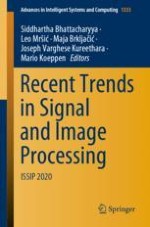This book gathers selected papers presented at the Third International Symposium on Signal and Image Processing (ISSIP 2020), organized by the Department of Information Technology, RCC Institute of Information Technology, Kolkata, during March 18–19, 2020. It presents fascinating, state-of-the-art research findings in the field of signal and image processing. It includes conference papers covering a wide range of signal processing applications involving filtering, encoding, classification, segmentation, clustering, feature extraction, denoising, watermarking, object recognition, reconstruction and fractal analysis. It addresses various types of signals, such as image, video, speech, non-speech audio, handwritten text, geometric diagram, ECG and EMG signals; MRI, PET and CT scan images; THz signals; solar wind speed signals (SWS); and photoplethysmogram (PPG) signals, and demonstrates how new paradigms of intelligent computing, like quantum computing, can be applied to process and analyze signals precisely and effectively.
